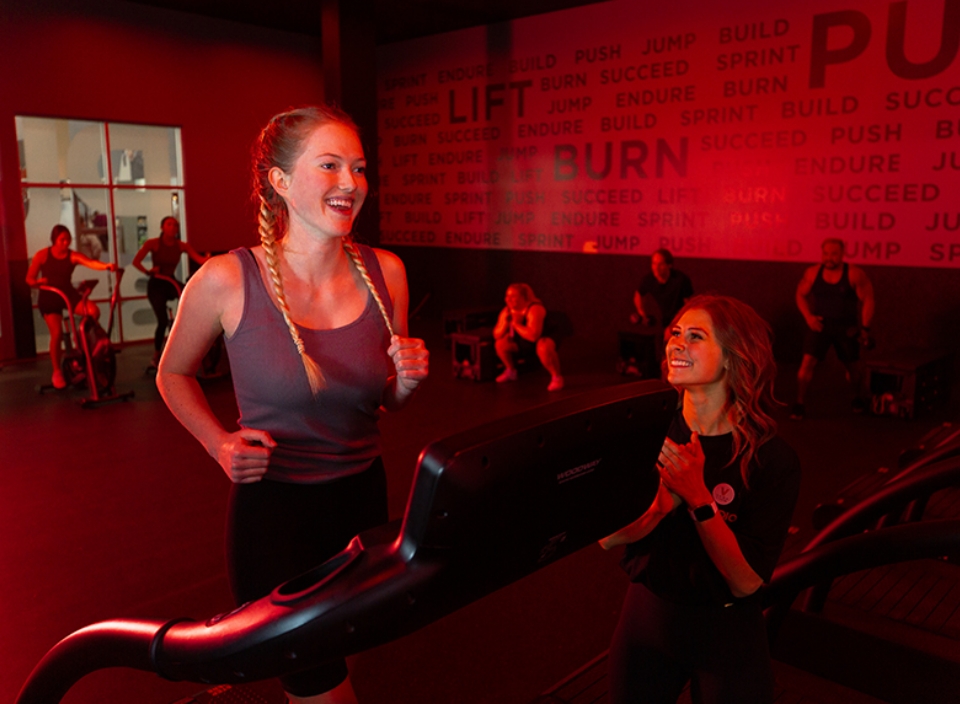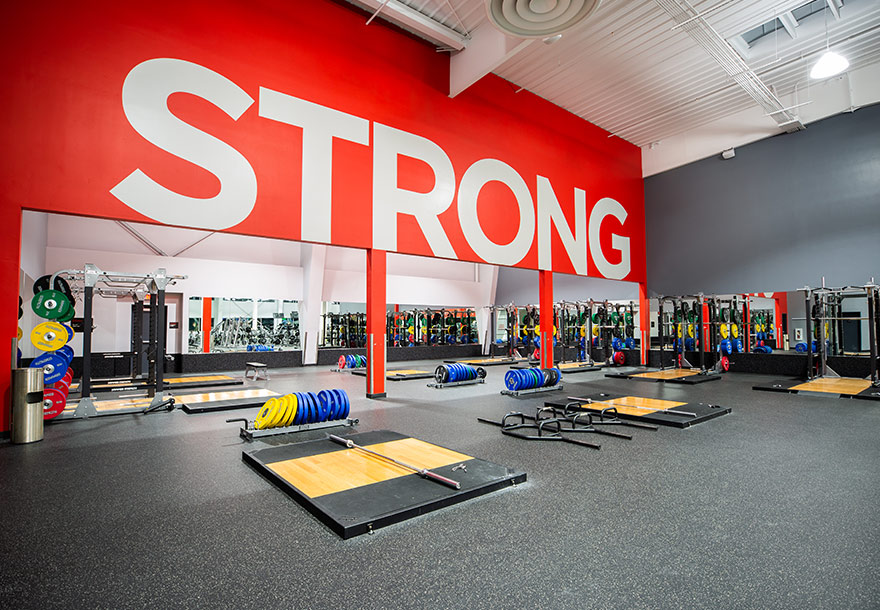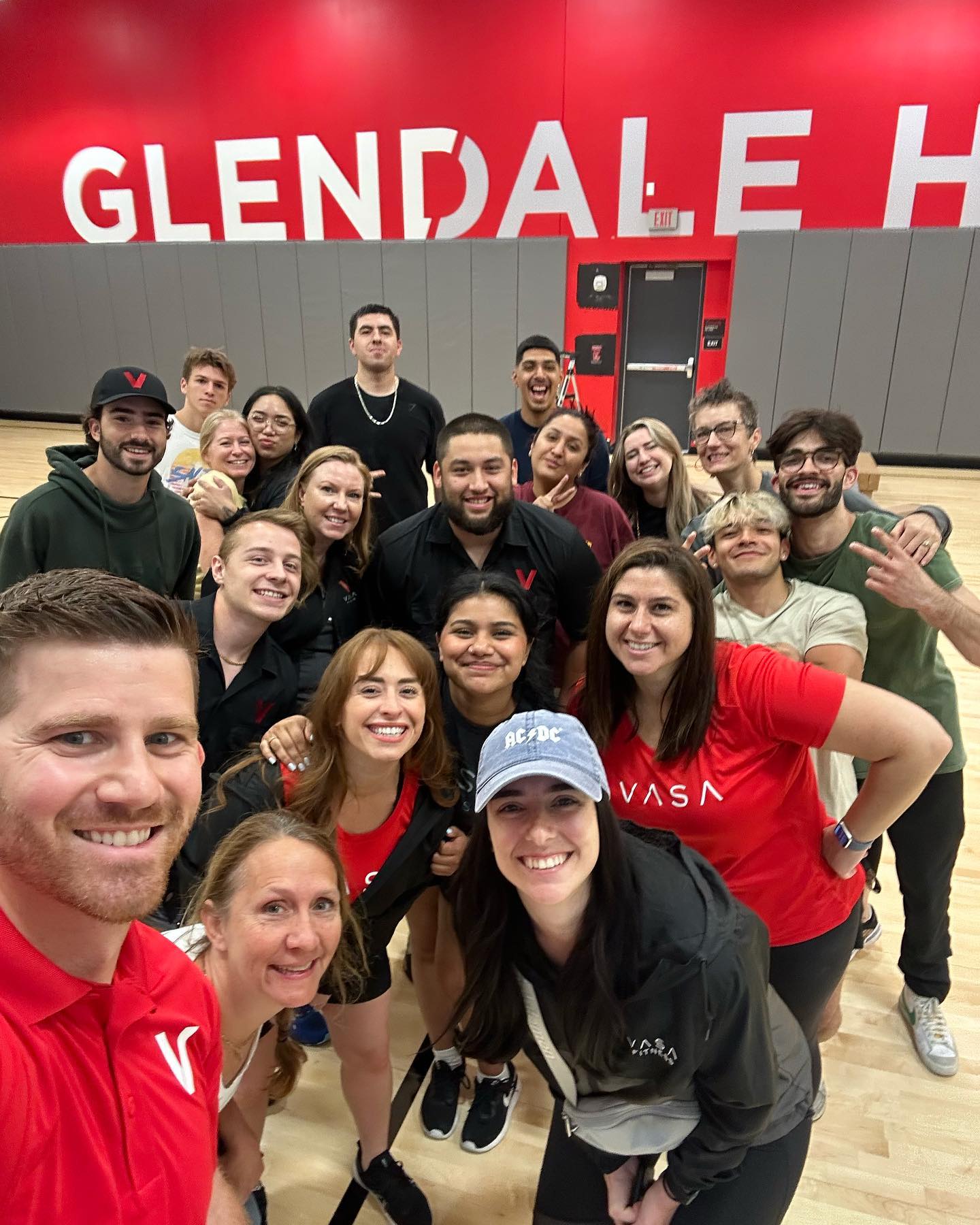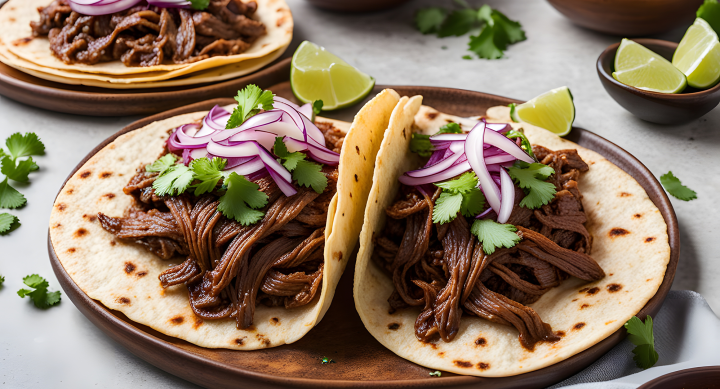Tonificar vs. aumentar volumen: elige tu enfoque de fitness
Objetivos de fitness
Cuando se trata de fitness, cada persona llega con objetivos diferentes. Algunos quieren adelgazar, definir sus músculos y que la ropa les quede mejor. Otros buscan ganar músculo, ganar fuerza y transformar su físico. Ya sea que tu objetivo sea... entonar o aumentar de volumenConocer la diferencia es clave para prepararse para el éxito.
Tonificar y aumentar volumen no son solo palabras de moda, sino que representan dos enfoques distintos del fitness con diferentes estrategias, entrenamientos y necesidades nutricionales. La decisión entre tonificar o aumentar volumen es más que estética; se trata de elegir el plan de fitness que mejor se adapte a tus objetivos, tipo de cuerpo y estilo de vida. La tonificación suele centrarse en reducir la grasa corporal y aumentar la definición muscular. El aumento de volumen, por otro lado, se centra en ganar masa y tamaño muscular, generalmente mediante un programa de entrenamiento de resistencia estructurado y un superávit calórico.
Entender qué objetivo se alinea con tu visión personal para tu cuerpo es el primer paso. ¿Buscas sentirte más ligero, más ágil y tener músculos más definidos? ¿O quieres aumentar tu masa muscular, levantar más peso y desarrollar una estructura más robusta? Una vez que identifiques tu objetivo, puedes crear un plan de acondicionamiento físico para lograrlo.
Sea cual sea el camino que elijas, tener objetivos claros es lo que impulsa el progreso. También es importante que tus objetivos sean realistas. Sin ellos, es fácil estancarse, perder la motivación o buscar resultados que no se alinean con tus necesidades reales.
Comprender la composición corporal
Antes de profundizar en las series y repeticiones o los planes de alimentación, es fundamental comprender la composición corporal. Este término se refiere a la composición del cuerpo: principalmente masa magra (músculos, huesos, órganos y agua) y masa grasa.
Para quienes buscan tonificar, el objetivo es reducir la grasa corporal mientras se mantiene o aumenta ligeramente la masa muscular magra. Esto proporciona esa apariencia firme y esculpida que muchos asocian con el fitness. Por otro lado, el volumen muscular consiste en aumentar la masa muscular magra, a menudo acompañado de un ligero aumento de grasa (especialmente durante un "volumen sucio", donde la calidad de la alimentación se prioriza sobre la cantidad).
Comprender tu composición corporal actual te ayuda a determinar qué ajustes debes hacer en tu entrenamiento y dieta. Por ejemplo, alguien con mayor grasa corporal podría priorizar la pérdida de grasa antes de iniciar una fase seria de desarrollo muscular. Mientras tanto, alguien que ya está relativamente delgado podría estar listo para aumentar las calorías y levantar más peso para ganar músculo.
Monitorear la composición corporal a lo largo del tiempo, mediante mediciones, fotos de progreso o herramientas como escaneos corporales, es más efectivo que confiar solo en la báscula. El peso no distingue entre grasa y músculo, y buscar una cifra sin contexto puede sabotear el progreso real. Los músculos suelen pesar más que la grasa, por lo que los análisis de composición corporal garantizan que se cumplan los objetivos, ya sea ganar músculo o perder grasa.
Desarrollar músculo magro
Al decidir entre tonificar o aumentar la masa muscular, desarrollar masa muscular magra es un denominador común. Los músculos no solo se ven bien, sino que también aceleran el metabolismo, favorecen la salud articular y mejoran la fuerza y la resistencia en general.
La forma más eficiente de desarrollar masa muscular magra es mediante el entrenamiento de resistencia. Esto incluye ejercicios con peso corporal, pesas libres, máquinas y bandas de resistencia. El enfoque debe estar en movimientos compuestos como sentadillas, zancadas, peso muerto, flexiones y dominadas, ya que estos ejercicios trabajan varios grupos musculares a la vez.
La nutrición juega un papel fundamental. Necesitas suficiente proteína para reparar y desarrollar tejido muscular, junto con una ingesta equilibrada de carbohidratos y grasas para mantener la energía y el equilibrio hormonal. Para tonificar, la dieta puede incluir un ligero déficit calórico, pero con suficiente proteína para preservar la masa muscular. Para ganar volumen muscular magro, un ligero superávit calórico se combina con levantamiento de pesas estratégico para promover el crecimiento sin ganar grasa excesiva.
La constancia es el arma secreta. Ganar músculo no es un proceso de una semana, es un proceso largo. Los resultados se obtienen al repetir entrenamientos inteligentes, comer bien y dormir lo suficiente para que tu cuerpo se recupere y se fortalezca con el tiempo.
Aumento de la masa muscular
El volumen muscular se trata de ganar tamaño y fuerza, y requiere un enfoque diferente al de la tonificación. La base es un superávit calórico: consumir más calorías de las que el cuerpo quema al día. Este superávit proporciona a los músculos la energía extra que necesitan para crecer.
Pero no todas las calorías son iguales. Una dieta exitosa para aumentar masa muscular es rica en proteínas magras (pollo, pavo, pescado, huevos, tofu), carbohidratos complejos (avena, arroz, boniato) y grasas saludables (aguacate, frutos secos, aceite de oliva). La ingesta de proteínas sigue siendo una prioridad, con un objetivo diario de entre 0,7 y 1 gramo de proteína por cada 450 g de peso corporal.
El entrenamiento también cambia durante un volumen. El objetivo es la sobrecarga progresiva, lo que significa aumentar continuamente la resistencia o el peso que levantas con el tiempo. Te centrarás en movimientos compuestos pesados como press de banca, sentadillas con barra, peso muerto y press de hombros. Estos ejercicios estimulan grandes grupos musculares y desencadenan las respuestas hormonales necesarias para el crecimiento muscular.
La recuperación es fundamental. Los músculos crecen al descansar, no mientras entrenas. Dormir bien, descansar y una nutrición adecuada después del entrenamiento son fundamentales para evitar el sobreentrenamiento y promover ganancias consistentes.
Nutrición para el fitness
Sea cual sea tu objetivo, tus resultados dependen de lo que comes. El entrenamiento desgasta tus músculos. La nutrición los fortalece.
Si estás tonificando, tu objetivo es un déficit calórico. Esto significa consumir menos calorías de las que quemas, para que tu cuerpo utilice las reservas de grasa para obtener energía. Pero este déficit debe controlarse. Si reduces demasiadas calorías, corres el riesgo de perder músculo en lugar de grasa. Prioriza las proteínas en cada comida, llena tu plato de verduras y carbohidratos ricos en fibra, y limita los alimentos ultraprocesados.
Si estás aumentando tu volumen muscular, tienes un superávit calórico. Pero eso no significa comer de todo. Un aumento de volumen limpio se centra en alimentos integrales que favorecen el crecimiento y el rendimiento muscular. El objetivo es el equilibrio. Esto se traduce en una cantidad adecuada de carbohidratos para obtener energía, grasas para la producción de hormonas y proteínas para la reparación.
El horario de las comidas también puede ayudar. Consumir proteínas de forma equilibrada a lo largo del día, junto con carbohidratos antes y después de los entrenamientos, puede mejorar la recuperación y el rendimiento. No olvides la hidratación. Los músculos deshidratados son más débiles, más propensos a los calambres y tardan más en recuperarse.
El mejor plan de nutrición es el que se adapta a tu estilo de vida, complementa tu entrenamiento y es sostenible a largo plazo. Por eso es importante la personalización. Una mala alimentación no compensa el entrenamiento, pero una dieta inteligente puede multiplicar por diez tus esfuerzos de entrenamiento.
Levantar pesas para estar en forma
El levantamiento de pesas no es solo para culturistas. Es una de las maneras más efectivas de transformar tu cuerpo, sin importar tu objetivo. Ya sea que quieras tonificar o ganar volumen, el levantamiento de pesas debe ser una parte fundamental de tu rutina.
Para tonificar, probablemente te centrarás en pesas moderadas con más repeticiones (10-15 por serie) y descansos más cortos para mantener la frecuencia cardíaca elevada. Esto ayuda a quemar grasa y a conservar la masa muscular, dándole a tu cuerpo un aspecto más definido.
Para aumentar la masa muscular, es más efectivo usar pesos más pesados con menos repeticiones (6-10 repeticiones por serie) y periodos de descanso más largos. Esto maximiza el reclutamiento de fibras musculares y el aumento de fuerza.
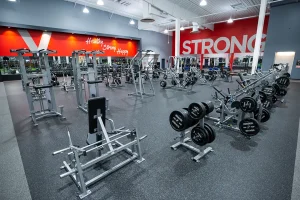
Ambos enfoques se benefician de los levantamientos compuestos (que involucran múltiples grupos musculares) y los ejercicios de aislamiento (que trabajan músculos específicos para perfeccionar y equilibrar). Por ejemplo, combinar el peso muerto (un ejercicio que involucra todo el cuerpo) con flexiones de bíceps (un ejercicio de aislamiento enfocado) puede ayudar a esculpir un físico equilibrado.
La forma y la técnica son fundamentales. Levantar con una técnica incorrecta aumenta el riesgo de lesiones y reduce la efectividad del ejercicio. No te apresures; domina primero los basic y luego aumenta el peso y la complejidad con el tiempo.
Variar las rutinas también es importante. Tu cuerpo se adapta a los estímulos repetidos, así que cambiar los ejercicios, los rangos de repeticiones o la estructura del entrenamiento cada pocas semanas mantiene un progreso constante y evita estancamientos.
Lograr el éxito en el fitness
Independientemente de la ruta que elijas en el debate entre tonificar o aumentar tu volumen, el éxito en el fitness no se consigue de la noche a la mañana. Se construye día a día, con esfuerzo constante, decisiones inteligentes y una mentalidad que acepta el proceso.
Empieza con objetivos específicos, medibles y realistas. "Quiero perder 4.5 kg de grasa en 3 meses" o "Quiero aumentar mi press de banca 9 kg" te da un objetivo y un plazo claros. Anótalo. Hazle seguimiento. Ajústalo cuando sea necesario.
La responsabilidad puede ser clave. Apuntarse a una clase de fitness, contratar a un entrenador personal o entrenar con un amigo aporta estructura y motivación. VASA Fitness ofrece sesiones de entrenamiento grupal, coaching personal y una comunidad de apoyo que ayuda a sus miembros a mantenerse enfocados y con energía.
Celebra los triunfos, por pequeños que sean. Quizás te queden mejor los jeans. Quizás batiste un nuevo récord personal en el gimnasio. Quizás simplemente llegaste un día que no querías. Cada triunfo importa, y reconocerlos impulsa la motivación a largo plazo.
Finalmente, entiende que el fitness no es un reto de 30 días; es un estilo de vida. Habrá contratiempos, semanas ajetreadas y días en los que no tengas ganas. Es normal. Lo más importante es que sigas participando. Con el plan, el apoyo y la mentalidad adecuados, llegarás adonde quieras.
¿Estás listo para elegir tu camino?
Ya sea que desee tonificar, aumentar su volumen o simplemente sentirse más seguro de sí mismo, Gimnasio VASA está aquí para ayudarte. Con entrenadores expertos, equipo de vanguardia y una comunidad centrada en resultados reales, tus objetivos están a tu alcance. Empieza con un pase libre ¡Antes de inscribirse para obtener una membresía!
Tonificar o aumentar volumen: tú decides. ¡Manos a la obra!
SUSCRÍBETE A NUESTRO BLOG
¡Introduce tu email para empezar a recibir nuestros emails del blog!
